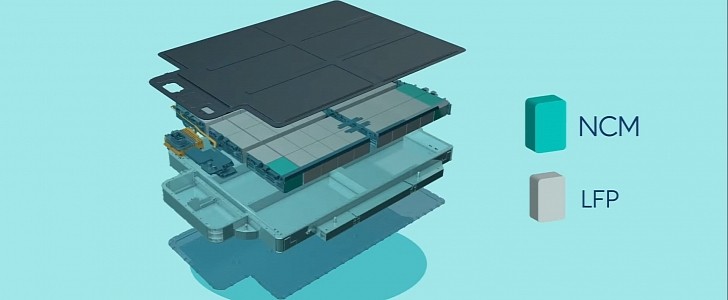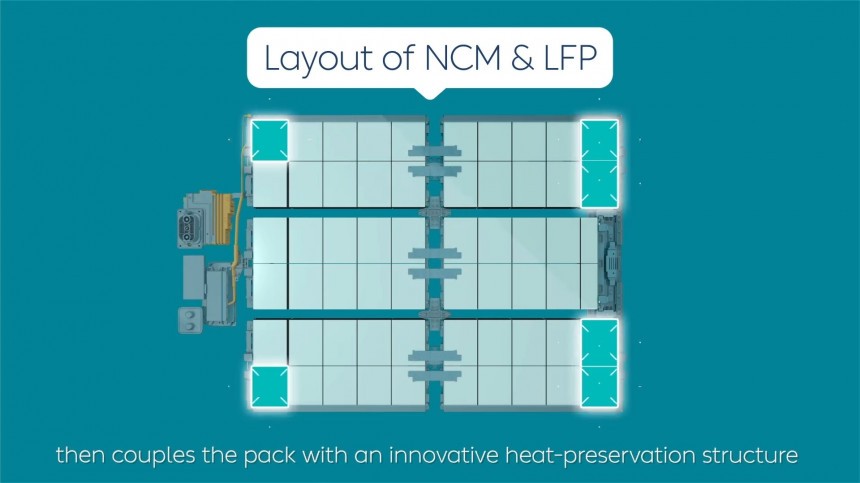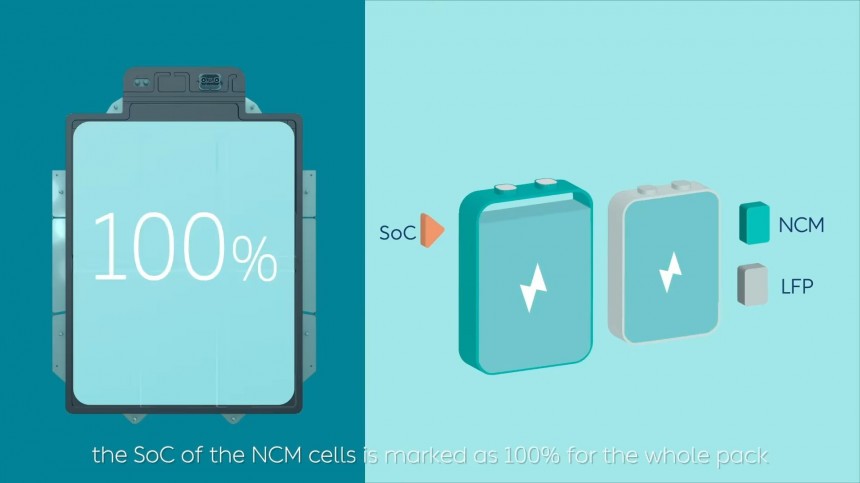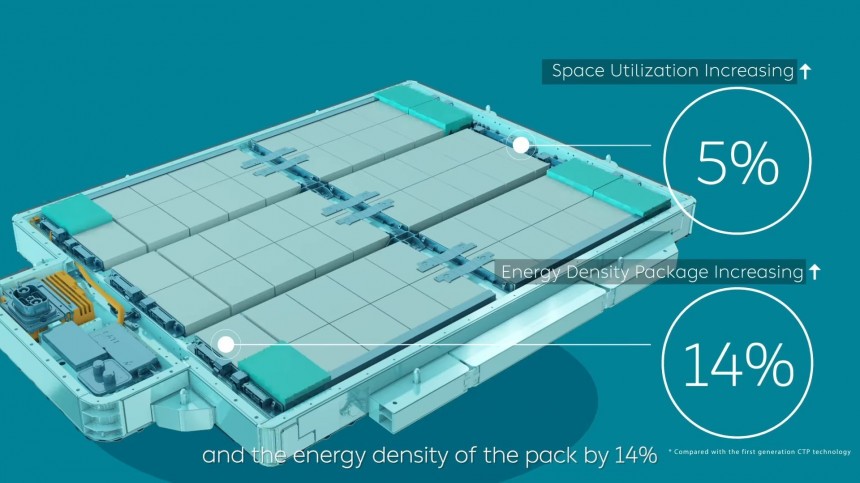When NIO revealed its 75-kWh hybrid battery pack on September 23, 2021, we were left with a couple of doubts about it. Which was the chemistry of the ternary cells? How were they arranged? The Chinese automaker solved them with a very educational video published on Facebook.
The most important conclusion we can draw from it is that the hybrid arrangement had a primary purpose: improving thermal management and preventing issues in the winter. But unfortunately, LFP (lithium iron phosphate) cells tend to lose a lot of performance in cold weather.
Adding ternary cells to the equation was an effective way to tackle the performance loss and deal with the inaccurate SoC (state of charge) estimation that is inherent to LFP cells when the temperatures drop.
To prevent losing performance in cold weather, NIO placed the ternary cell modules on the corners of the battery pack and only there. Those are the points that suffer the most in cold weather. At this point in the video, NIO also revealed which chemistry it chose for its hybrid battery pack: NMC (lithium nickel manganese cobalt oxides).
Regarding the inaccurate SoC estimation, all the cells in the battery pack – regardless of being LFP or NMC – are connected in series. With that arrangement, the NMC batteries work as a charging meter method for the LFP cells.
Called Dual-system SoC Estimation Methodology, NIO created it by checking when LFP cells are completely charged and fully depleted. In these situations, NMC cells still had respectively some room for charging or some charge left as a buffering.
Despite that, NIO marked these points as those of full charge and no juice left in the battery pack. This method helped the Chinese automaker reduce the SoC estimation deviation drop from 10% to only 3%.
NIO addressed the thermal disadvantage of LFP cells not only with the NMC batteries. It also created better thermal insulation for these cells. According to the automaker, that was achieved with “an innovative heat-preservation structure and low-conductivity materials” for the battery pack case.
We imagine it uses some sort of composite for that, but the company did not want to give away its secret sauce. Radiant heating in five points of the battery pack also helps it preserve the temperature even in frigid weather. NIO said that this prevents the battery pack from freezing even if the car is left outside a garage for an entire winter night.
Another major disadvantage LFP cells have is the low energy density, which makes them heavier than other cells for the same amount of energy. By talking only about their handicaps, it may seem that they are a worse solution compared to ternary cells, which is not true.
LFP cells are cheaper, which is crucial for electric cars to be more affordable. They also are not so prone to thermal runaways, which is what makes EVs burn every once in a while. Finally, they can also be used as structural components. NIO made good use of that capability by adopting CTP (cell-to-pack) techniques to build its hybrid battery pack.
When a cell is part of the battery pack structure, it cuts the need for a case or other components to hold it. That saves mass and increases energy density. According to NIO, CTP allowed it to improve space utilization by 5% and energy density by 14%. With that, NIO’s entry-level battery pack with ternary cells and 70 kWh turned into the 75-kWh hybrid battery pack NIO now offers with no size changes.
On top of all that, it is worth remembering that NIO’s battery packs are swappable. So even if owners have a range reduction due to cold weather, they can quickly replace depleted battery packs in one of the more than 800 stations the automaker offers in China.
Adding ternary cells to the equation was an effective way to tackle the performance loss and deal with the inaccurate SoC (state of charge) estimation that is inherent to LFP cells when the temperatures drop.
To prevent losing performance in cold weather, NIO placed the ternary cell modules on the corners of the battery pack and only there. Those are the points that suffer the most in cold weather. At this point in the video, NIO also revealed which chemistry it chose for its hybrid battery pack: NMC (lithium nickel manganese cobalt oxides).
Called Dual-system SoC Estimation Methodology, NIO created it by checking when LFP cells are completely charged and fully depleted. In these situations, NMC cells still had respectively some room for charging or some charge left as a buffering.
Despite that, NIO marked these points as those of full charge and no juice left in the battery pack. This method helped the Chinese automaker reduce the SoC estimation deviation drop from 10% to only 3%.
We imagine it uses some sort of composite for that, but the company did not want to give away its secret sauce. Radiant heating in five points of the battery pack also helps it preserve the temperature even in frigid weather. NIO said that this prevents the battery pack from freezing even if the car is left outside a garage for an entire winter night.
Another major disadvantage LFP cells have is the low energy density, which makes them heavier than other cells for the same amount of energy. By talking only about their handicaps, it may seem that they are a worse solution compared to ternary cells, which is not true.
When a cell is part of the battery pack structure, it cuts the need for a case or other components to hold it. That saves mass and increases energy density. According to NIO, CTP allowed it to improve space utilization by 5% and energy density by 14%. With that, NIO’s entry-level battery pack with ternary cells and 70 kWh turned into the 75-kWh hybrid battery pack NIO now offers with no size changes.
On top of all that, it is worth remembering that NIO’s battery packs are swappable. So even if owners have a range reduction due to cold weather, they can quickly replace depleted battery packs in one of the more than 800 stations the automaker offers in China.



























